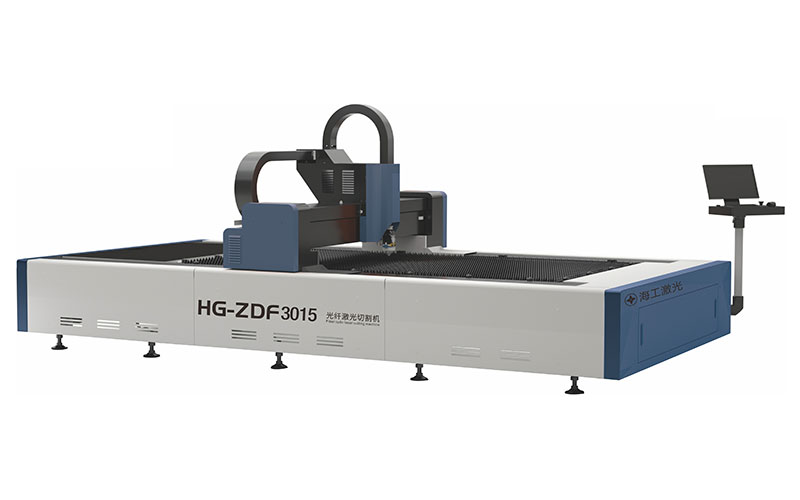Have you seen a metal laser cutting machine? Do you kno […]
Have you seen a metal laser cutting machine? Do you know what a metal laser cutting machine is? A metal laser cutting machine is a machine equipment that is made of metal and uses laser technology for cutting. Now many places use this kind of equipment, this kind of equipment uses laser. Do you know what a laser is? The laser is a beam with very strong releasing ability, and the laser can realize extremely fast cutting in a very short time. The metal cutting machine is very labor-saving and time-saving. Do you know the principle of the metal laser cutting machine? Let's take a look at the principle of metal laser cutting machine.
1. Principle
Laser cutting is to irradiate the workpiece with a focused high-power density laser beam to quickly melt, vaporize, ablate or reach the ignition point of the irradiated material. At the same time, the molten material is blown away by the high-speed airflow coaxial with the beam to realize the cutting of the workpiece. open. Laser cutting is one of the thermal cutting methods.
Two, classification
Laser cutting can be divided into four categories: laser vaporization cutting, laser melting cutting, laser oxygen cutting and laser scribing and controlled fracture.
1) Laser vaporization cutting
The high-energy-density laser beam is used to heat the workpiece, so that the temperature rises rapidly, reaching the boiling point of the material in a very short time, and the material starts to vaporize and form vapor. The jetting speed of these vapors is very high, and at the same time as the vapor jets, cuts are formed in the material. The heat of vaporization of materials is generally very large, so a lot of power and power density are required for laser vaporization and cutting.
Laser vaporization cutting is mostly used for cutting extremely thin metal materials and non-metallic materials (such as paper, cloth, wood, plastic, rubber, etc.).
2) Laser melting and cutting
In laser melting and cutting, the metal material is melted by laser heating, and then non-oxidizing gas (Ar, He, N, etc.) is sprayed through a nozzle coaxial with the beam, and the liquid metal is discharged by the strong pressure of the gas to form an incision. Laser melting and cutting do not need to vaporize the metal completely, and the energy required is only 1/10 of that of vaporized cutting.
Laser melting cutting is mainly used for cutting some materials that are not easy to oxidize or active metals, such as stainless steel, titanium, aluminum and their alloys.

3) Laser oxygen cutting
The principle of laser oxygen cutting is similar to oxyacetylene cutting. It uses a laser as a preheating heat source and an active gas such as oxygen as the cutting gas. On the one hand, the blown gas reacts with the cutting metal to cause oxidation reaction and release a large amount of oxidation heat; on the other hand, the molten oxide and melt are blown out of the reaction zone to form an incision in the metal. Since the oxidation reaction in the cutting process generates a lot of heat, the energy required for laser oxygen cutting is only 1/2 of the melting cutting, and the cutting speed is much faster than laser vaporization cutting and melting cutting. Laser oxygen cutting is mainly used for easily oxidized metal materials such as carbon steel, titanium steel and heat-treated steel.
4) Laser scribing and controlled fracture
Laser scribing uses a high-energy density laser to scan the surface of the brittle material, so that the material is heated to evaporate a small groove, and then a certain pressure is applied, and the brittle material will crack along the small groove. The lasers used for laser scribing are generally Q-switched lasers and CO2 lasers.
Controlled fracture is the use of the steep temperature distribution generated when the laser groove is carved, which generates local thermal stress in the brittle material, causing the material to break along the small groove.
ZHEJIANG HAIGONG MACHINERY CO., LTD.

EN Mobile Version

CN Mobile Version


